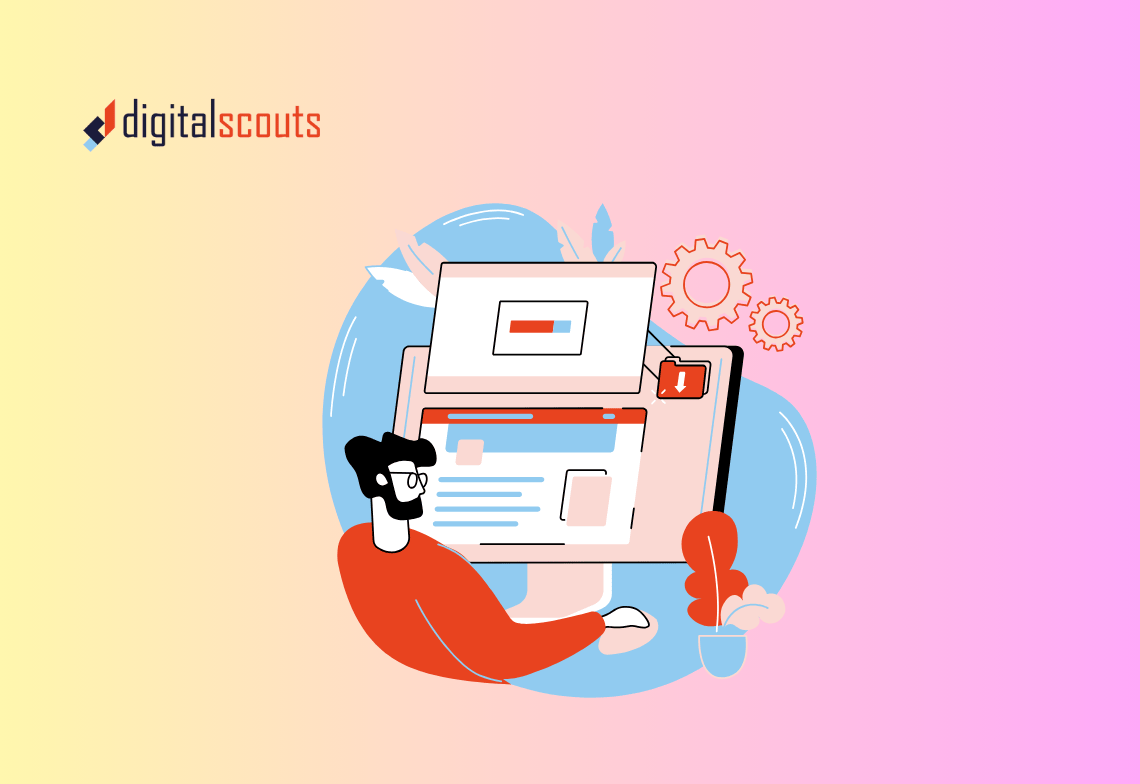Account Based Marketing has powered many successful B2B growth programs. By focusing on high value accounts and treating each as a market of one, ABM brought relevance and efficiency to complex buying cycles. Buyer expectations have changed though. In a recurring revenue world, the sale is not the finish line. It is the starting point. That shift is why Account Based Experience has emerged.
ABX extends ABM across the entire customer lifecycle. It connects marketing, sales, customer success, and product so every interaction feels coordinated and valuable from the first touch through renewal and expansion. When teams move from campaign thinking to experience thinking, companies see higher net revenue retention, healthier account engagement, and more expansion opportunities. This guide explains the difference between ABM and ABX, how to build an ABX framework, what to measure, and how to enable it with platforms like HubSpot and your customer success tooling, all within a broader RevOps strategy.
ABM vs ABX in plain terms
ABM concentrates on acquisition. ABX covers acquisition, onboarding, adoption, expansion, and advocacy. ABM aligns marketing and sales. ABX brings marketing, sales, customer success, product, and support to the same table. ABM is campaign led. ABX is journey led and relationship driven. Success for ABM is often measured in opportunities and new revenue. Success for ABX includes net revenue retention, customer lifetime value, engagement depth, and advocacy, reported with the right B2B marketing KPIs and attribution.
ABX does not replace ABM. It matures it. You keep the focus on high value accounts and add the systems and routines that protect renewals and unlock growth inside those accounts.
A practical ABX framework you can run
Think of ABX as a set of connected routines. The following steps create a working system.
1. Define and prioritise target accounts
Use firmographic fit, technographic fit, and intent signals to select and tier accounts inside a simple B2B marketing framework that keeps stages, goals, and metrics aligned.. In HubSpot or your CRM, create tiers that reflect potential and current value. Tier one receives a higher level of focus and personalisation. Tier two and tier three receive programmatic personalisation with a clear plan to graduate high potential accounts to higher tiers when engagement grows.
2. Map buying committees and post sale influencers
Your account plan should include decision makers, champions, users, financial stakeholders, and technical stakeholders. List their goals, challenges, and what proof they need at each stage of the journey. Remember that customer success managers, administrators, and end users influence renewal and expansion decisions. Build persona notes that sales and success teams can use in outreach and value reviews, supported by a clear email marketing strategy for each role and stage.
3. Agree shared objectives and run an ABX council
Form a small council with leaders from marketing, sales, customer success, and product. Meet monthly to review target account engagement, opportunity creation, usage and adoption trends, renewal risk, and expansion potential. Use a shared dashboard so everyone looks at the same numbers. Align incentives to lifecycle outcomes such as net revenue retention and health scores, not only new business, and use focused lead nurturing from MQL to SQL to keep opportunities moving.
4. Build lifecycle content and messages
Every stage needs specific content and a clear next step. For acquisition, use case studies that highlight outcomes, executive one pagers, and ROI calculators. For onboarding, use success plans, training kits, and first value checklists. For adoption, use usage tips, community webinars, and best practice guides. For expansion, use roadmaps, value reviews, and executive briefings. For advocacy, create co branded stories and speaker opportunities. Store all assets in one library and tag by stage, persona, and product so teams can find and personalise quickly, and support discovery with strong SEO strategies at the awareness and consideration stages.
5. Orchestrate coordinated engagement across channels
ABX combines digital and human touch. In HubSpot CRM you can personalise email nurtures by account stage, trigger ads when accounts show intent, adapt website modules for named accounts, and notify customer success when usage drops or renewals approach. Sales and success teams should use the same content and value messages that marketing promotes. The experience should feel consistent whether the touch is an ad, an email, a call, a community post, or a quarterly business review.
6. Measure what matters across the lifecycle
Adopt a small set of metrics that represent the full journey. Track account engagement trends, number of meetings with buying committee members, opportunity creation and expansion rate, product adoption and health score, net revenue retention and customer lifetime value by tier, and participation in advocacy programs. Tie activity metrics to revenue and retention outcomes so your team can see which plays move the needle, and apply AI in B2B marketing to surface patterns that predict renewal and expansion.
Solving common ABX challenges
Even well run teams hit obstacles when moving from ABM to ABX. Four challenges appear often and each has a practical fix.
Data fragmentation is the first obstacle. ABX runs on a unified view of the account. Ensure your CRM is the source of truth for account and revenue data, connect marketing automation and success platforms to it, and keep properties standardised. Consistent fields and naming enable clean reporting and automation.
Siloed ownership is the second obstacle. ABX requires shared goals. Use the ABX council to align priorities and resolve handoff issues. Record decisions and definitions, such as what counts as an engaged account or a renewal risk, and keep them visible to all teams.
Scaling personalisation is the third obstacle. Personalised experiences do not require fully bespoke work every time. Set up dynamic content modules in email and on key web pages, create message templates by persona, and use simple AI prompts to adapt copy while keeping the core message consistent.
Measuring ROI is the fourth obstacle. ABX value appears across many touches over months or quarters. Use cohort views to connect early engagement to later outcomes. Review correlation between engagement scores and renewal or expansion. Use both system based attribution and self reported attribution in conversations with account owners to fill the gaps that models miss.
Where AI and automation fit
AI helps teams find signals and time their actions. You can analyse product usage and intent to flag renewal risk or expansion potential. You can score accounts based on behaviour patterns that tend to precede an opportunity or a churn event. You can recommend the most relevant content for a specific stakeholder and stage. When these insights trigger HubSpot or Salesforce workflows, teams take the right action at the right time. Unified data is essential so HubSpot AI works effectively for account insights. The goal is to support human relationships with timely and relevant prompts, not to replace them.
The ABX tech stack that actually works
Effective ABX comes from a connected stack rather than any single tool. Your CRM and marketing automation platform sit at the core. HubSpot or Salesforce combined with your email and advertising integrations manage outreach and tracking. An ABM platform such as 6sense, Demandbase, or Terminus can add intent insights and orchestration for named accounts. Sales engagement tools such as Outreach or Salesloft help reps run consistent personal sequences. Customer success platforms such as Gainsight or ChurnZero provide health scores and renewal workflows. Analytics tools like Looker or Power BI consolidate reporting for the ABX council. The value comes from integration and shared visibility so each team acts from the same data.
A simple ABX playbook you can start this quarter
Begin with a clear set of accounts and a small number of coordinated plays. Pick ten to twenty tier one accounts and build a joint plan with sales and success. Run a three touch executive outreach sequence tied to a relevant case study and a short value hypothesis. Invite the buying committee to a product roadmap session or a customer led webinar focused on outcomes. Track engagement and create a value review for each account ninety days later. Document what worked and scale the winning elements to tier two accounts using programmatic personalisation.
The future of ABX
ABX will continue to evolve beyond orchestration into deeper community and partnership. Customers want to learn from peers and see proof in context, not simply receive more messages. Expect to see stronger investment in customer communities, product led expansion paths, and co creation of content and solutions with strategic accounts. AI will help teams anticipate needs and reduce friction, but trust will still come from consistent value delivered by people.
How Digitalscouts helps B2B companies implement ABX
Digitalscouts helps B2B organisations move from ABM to ABX by building the strategy, systems, and content that connect marketing, sales, and customer success. We align teams around lifecycle metrics, set up integrated tech stacks, and design personalised account journeys that run from acquisition through expansion. We work with marketing and RevOps teams to turn data into clear and actionable stories. We apply AI where it improves signal and speed, whether that means improving lead quality, increasing adoption, or growing revenue from existing customers.
Ready to turn key accounts into long term growth partners? Talk to us
Frequently Asked Questions
About Author
Ashish is a B2B growth strategist who helps scaleups align marketing and sales through Account-Based Marketing (ABM), RevOps, and automation. At DigitalScouts, he builds scalable content engines, streamlines lead flows with HubSpot, and runs targeted GTM programs to drive predictable pipeline. He regularly shares insights on using AI and automation to power ABM and accelerate complex buyer journeys.








